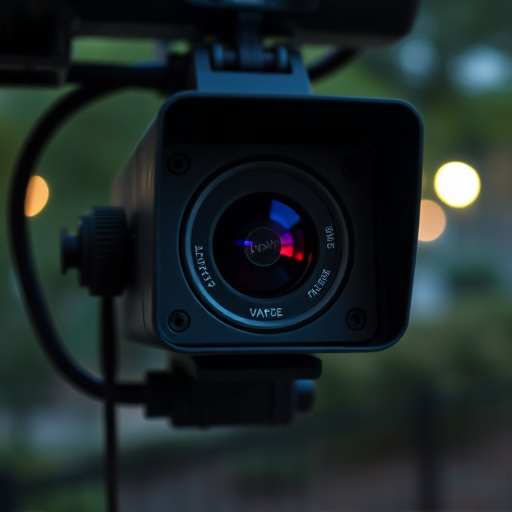Mini Surveillance Cameras for Apartments offer advanced features in a compact form, integrating seamlessly into everyday objects for strategic placement. Discreet design, remote access via smartphone apps, and innovative techniques like hiding behind decor ensure unobtrusive monitoring while maintaining resident privacy within legal boundaries. Responsible deployment requires transparency, strategic placement, and clear guidelines on footage access.
In the age of advanced technology, privacy and security have evolved to new heights. This comprehensive guide explores the world of mini surveillance cameras, delving into their sophisticated technology and creative applications in apartment settings. From understanding the nuances of discreet camera placement to mastering advanced techniques that avoid detection, we navigate the landscape of modern surveillance equipment camouflage. Remember that while ensuring safety is paramount, legal and ethical considerations must be a guiding light in this intricate dance of privacy and protection, specifically focusing on Mini Surveillance Cameras for Apartments.
- Understanding Mini Surveillance Camera Technology
- Camouflage Strategies for Discreet Placement
- Advanced Techniques to Avoid Detection
- Legal and Ethical Considerations for Apartment Surveillance
Understanding Mini Surveillance Camera Technology
Mini surveillance cameras, a discreet and increasingly popular choice for apartment owners, offer advanced technology with tiny yet powerful capabilities. These compact devices pack high-resolution sensors, advanced optics, and motion detection features into their diminutive frames, allowing them to capture sharp, clear images and videos even in low-light conditions. Their small size enables strategic placement, making it possible to monitor common problem areas like entry points, corridors, and shared spaces without drawing attention.
Designed with versatility in mind, mini surveillance cameras for apartments can be easily installed and hidden within everyday objects like light switches, electrical outlets, or even plant pots. This level of integration ensures unobtrusive monitoring while providing peace of mind. Additionally, many models offer remote access via smartphone apps, allowing residents to keep an eye on their properties from anywhere, at any time.
Camouflage Strategies for Discreet Placement
When deploying mini surveillance cameras for apartments or any space, careful consideration of camouflage strategies is paramount to maintain discreetness. The goal is to integrate the equipment seamlessly into the environment, making it nearly invisible to potential subjects. One effective approach involves utilizing similar materials and colors as the surroundings. For instance, using camera housing that mimics the texture and hue of walls, ceilings, or even floor tiles can help blend them in. This technique, known as color and material matching, ensures that the cameras become one with their environment, reducing the risk of detection.
Furthermore, strategic placement is key. Positioning mini surveillance cameras behind objects like pictures, shelves, or curtains can provide an additional layer of camouflage. By hiding them in plain sight, you create a false sense of security for occupants while capturing footage unobstrusedly. This method requires careful observation of the space and understanding common human behavior to identify optimal spots that offer both concealment and clear line-of-sight for video capture.
Advanced Techniques to Avoid Detection
In the realm of surveillance, especially with Mini Surveillance Cameras for Apartments, advanced techniques aim to mask the presence of recording devices while capturing clear footage. One such technique involves integrating cameras into everyday household items like light bulbs or smoke detectors. These subtle placements make it challenging for intruders or individuals seeking privacy to detect the camera, ensuring uninhibited monitoring.
Another innovative approach is the strategic use of infrared lighting and thermal imaging technology. By combining these with infrared-sensitive cameras, surveillance equipment can operate discreetly in low-light conditions while remaining invisible to the human eye. This blend of cutting-edge technology and creative camouflage ensures that valuable data is captured without raising suspicion.
Legal and Ethical Considerations for Apartment Surveillance
Surveillance in apartments, facilitated by mini surveillance cameras, raises significant legal and ethical concerns. Homeowners or property managers must navigate a complex web of privacy laws that vary across jurisdictions. Balancing security needs with residents’ right to privacy is paramount. Installation of these devices should be conducted responsibly, ensuring compliance with local regulations.
Ethical considerations demand transparent practices. Residents should be informed about the presence and purpose of surveillance systems. Discreet placement and limited data collection can help mitigate potential invasion of privacy. Additionally, clear guidelines on who has access to recorded footage and for what purposes are essential to maintain trust and uphold ethical standards in apartment communities.
Mini Surveillance Cameras for apartments have evolved, offering advanced technology and creative camouflage strategies. Understanding these devices’ capabilities and learning effective placement techniques can enhance security while respecting legal and ethical boundaries. By employing discrete methods to avoid detection, homeowners can ensure peace of mind without compromising privacy. Remember, responsible use of such tools is key to maintaining a safe living environment.
